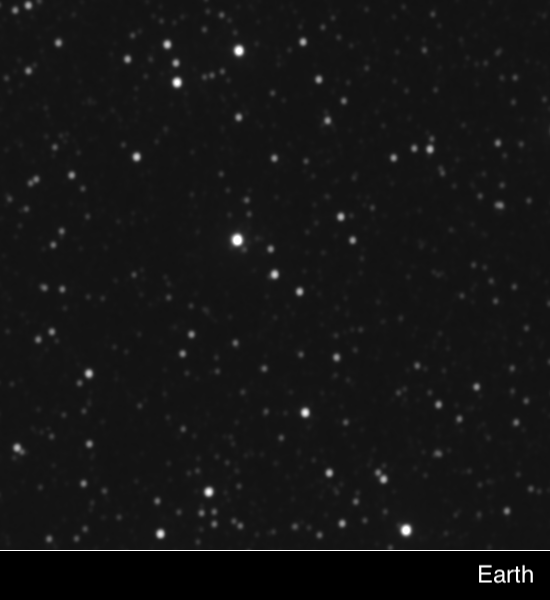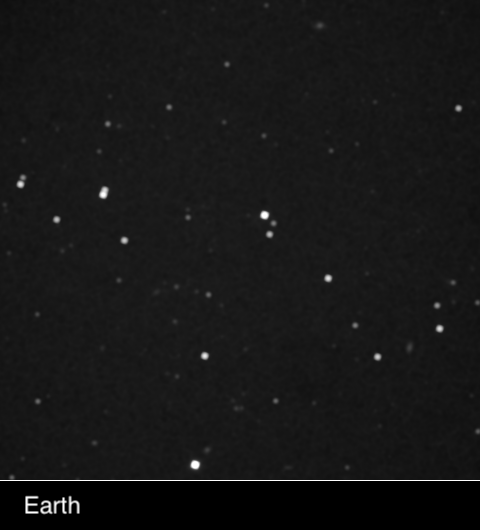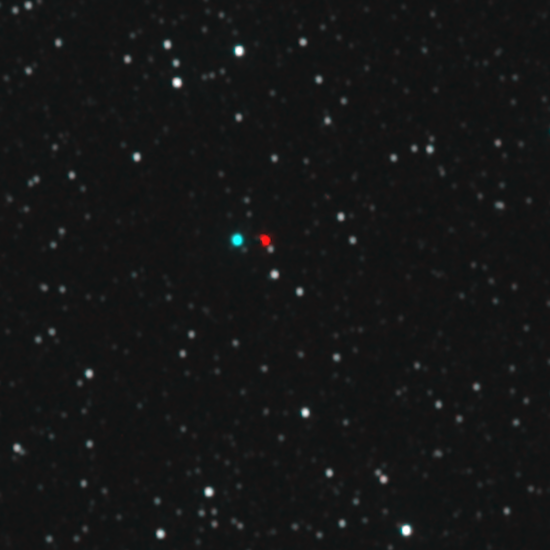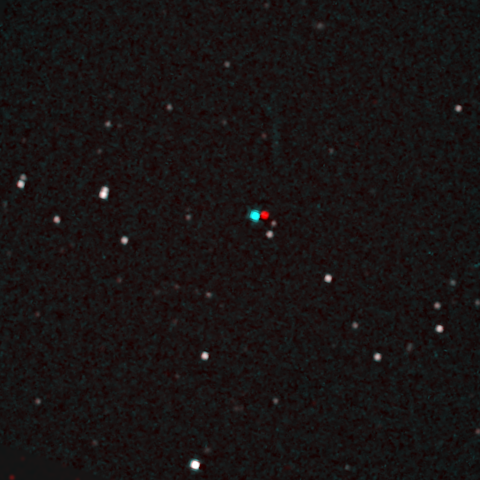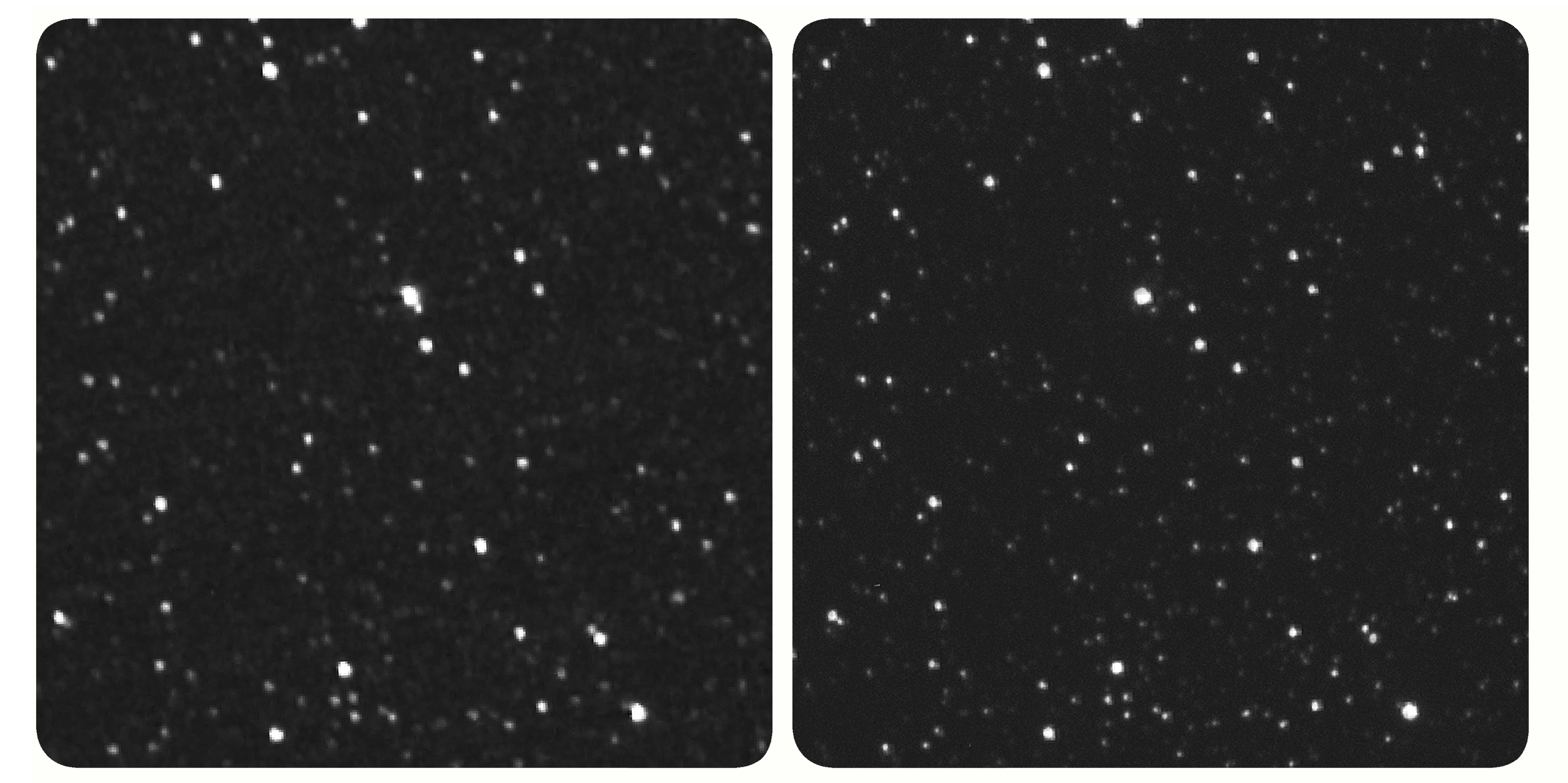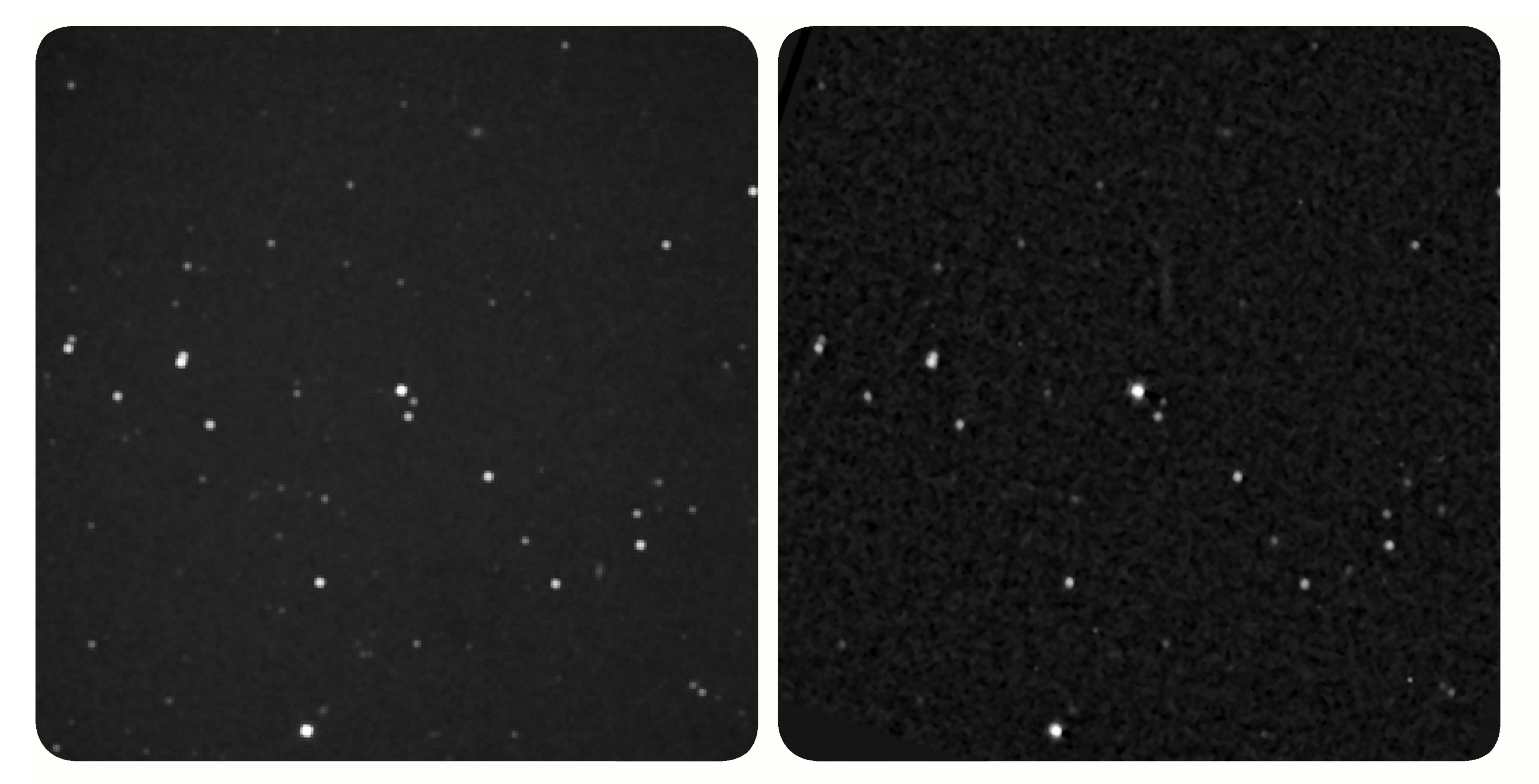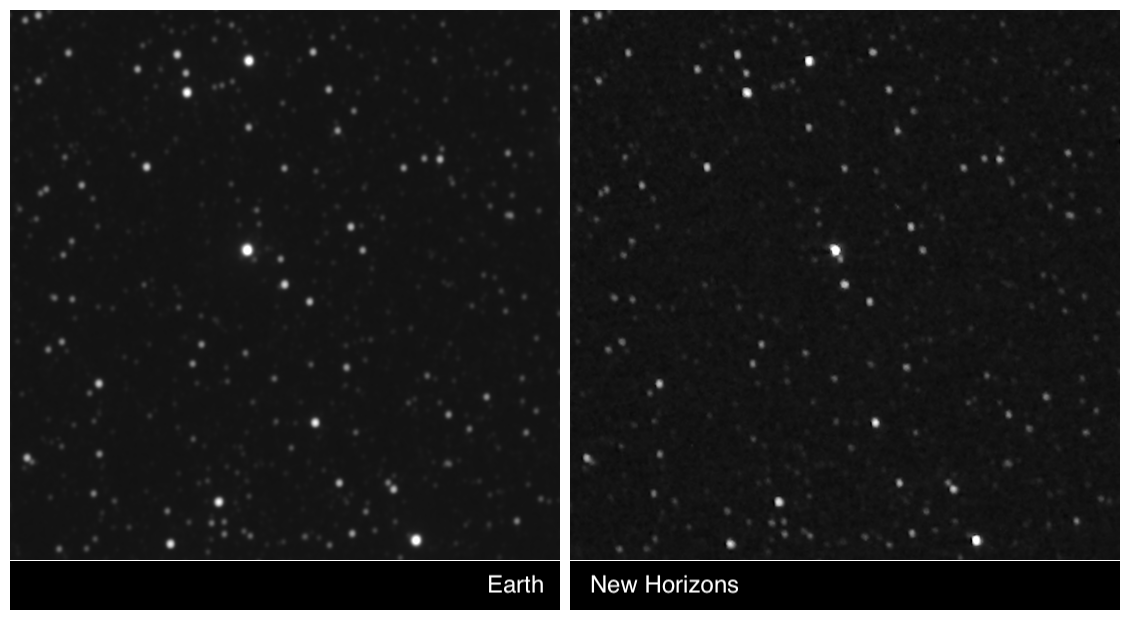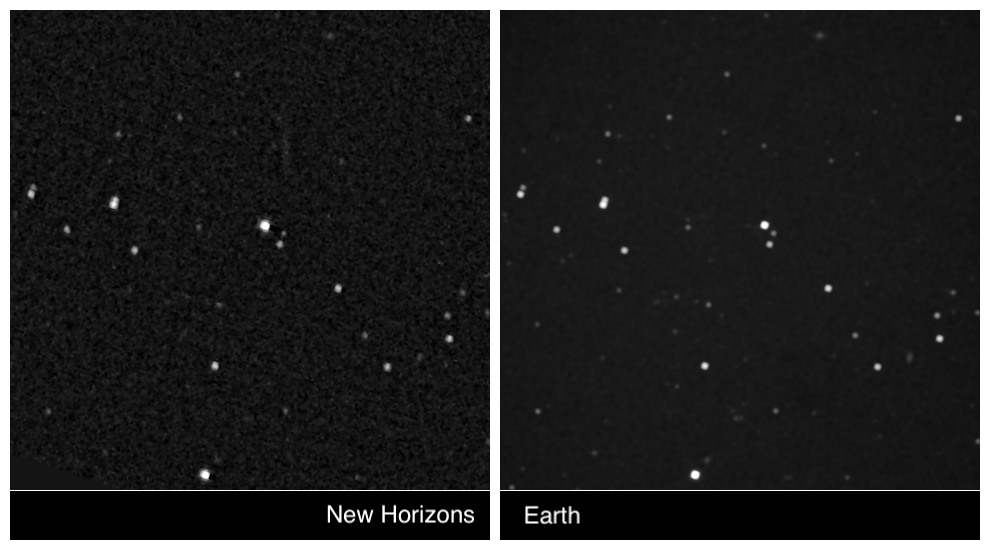9.12.2019
The PI's Perspective: What a Year, What a Decade!

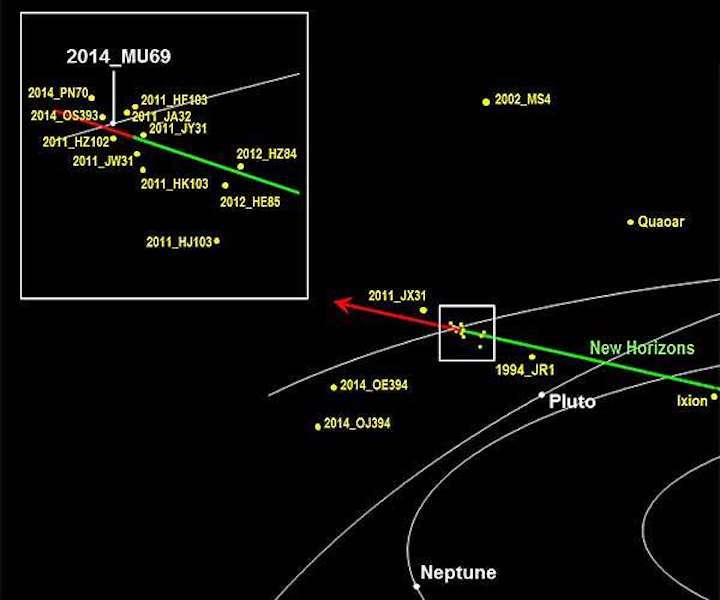
With data from the Arrokoth flyby - which will continue coming back to Earth through all of 2020 - we've already learned an amazing amount about KBOs that could never have been gleaned from Earth-based telescopes; not even the powerful Hubble or the much anticipated James Webb Space Telescope set to launch in 2021. Most importantly, in my view, we discovered that Arrokoth, a "contact binary" consisting of two independent lobes that joined gently, appears to have formed with the unmistakable characteristics of "local cloud collapse" models of solar system formation.
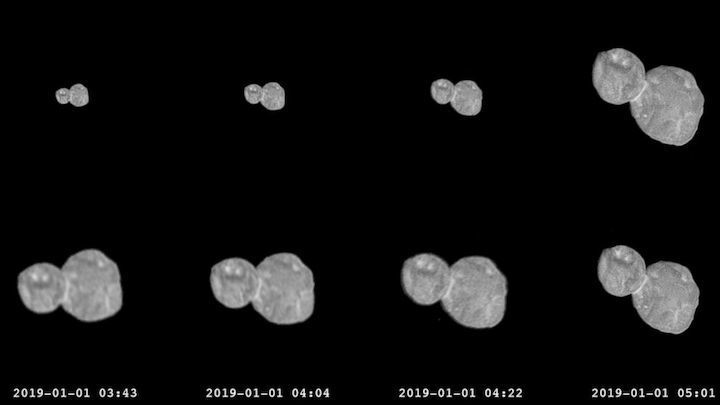
New Horizons is healthy and performing well as it flies ever onward, at nearly one million miles per day! This month we're collecting new data on the Kuiper Belt's charged particle and dust environment, and observing two distant Kuiper Belt objects (KBOs) to learn about their surface properties, shapes and rotation periods, and to search for satellite systems.
Much more is in store for this mission, but as this year and decade conclude, I want to look back and take stock of where we have been.
For New Horizons, 2019 began with a major mission milestone: the first-ever close up and personal exploration of a KBO. That target, originally known as 2014 MU69, is now the farthest world ever explored - more than a billion miles beyond Pluto!
And, if you hadn't heard, last month MU69 finally received its official name: Arrokoth, a Powhatan/Algonquian Native American word for "sky," which the New Horizons team chose. I love this beautiful name, and the way it beautifully honors both the state of Maryland, where so many Powhatans lived and where New Horizons was build and is operated from!
With data from the Arrokoth flyby - which will continue coming back to Earth through all of 2020 - we've already learned an amazing amount about KBOs that could never have been gleaned from Earth-based telescopes; not even the powerful Hubble or the much anticipated James Webb Space Telescope set to launch in 2021. Most importantly, in my view, we discovered that Arrokoth, a "contact binary" consisting of two independent lobes that joined gently, appears to have formed with the unmistakable characteristics of "local cloud collapse" models of solar system formation.
These models, really just computer simulations before New Horizons revealed Arrokoth, posited that individual planetesimals - the building blocks of planets - formed from material in their immediate neighborhood, rather than from collisions of far-flung material as 20th century computer simulations predicted. Results from this flyby have led to a major advance in understanding the origin of the planets of our solar system.
The flawless flyby of Arrokoth and its many discoveries not only made 2019 a banner year for New Horizons, it also marked completion of the second major task (after exploring the Pluto system) that the mission was conceived to accomplish in the early 2000s, when the first Planetary Decadal Survey ranked it as a top funding priority. So it's appropriate this December to look back and celebrate the work of our mission and our team in carrying out this challenging exploration.
And as the decade of the 2010s ends, I also want to reflect on how much the mission has accomplished over the past 10 years. As 2009 closed out, New Horizons wasn't even halfway from Earth to Pluto - and Pluto remained just a dot in the distance to every telescope humankind had ever built. Halfway through the decade though, in the summer of 2015, New Horizons transformed Pluto and its system of moons from points of light into real worlds.
And what worlds we found! With our Pluto discoveries we can rewrite the textbooks about how complex and how geologically active small planets can be. From its convecting nitrogen glaciers and cryovolcanoes to its hazy atmosphere and the watery ocean that we now suspect lies beneath its icy crust, Pluto astounded us. So much so, in fact, that planetary scientists want new missions to orbit it and to study more of its dwarf planet kin across the Kuiper Belt.
And as the data from the Pluto system flowed back in 2015 and 2016, New Horizons was sent onward to explore the Kuiper Belt in a first extended mission that targeted the flyby of Arrokoth as its centerpiece and which continues to explore both the Kuiper Belt environment and distant KBOs and dwarf planets seen in our telescopes.
Exploring Onward
So as we look forward to the 2020s, our team is planning the next few years for New Horizons. Starting next summer, we plan to use some of the largest ground-based telescopes and possibly the Hubble to begin a search for new KBOs to explore, both up close and in the distance. (We can't search until summer because that is when the part of the sky where New Horizons is going is in the darkness of the night time sky.)
We don't know how many KBOs we will discover or whether any will be within our fuel supply to reach for a final close flyby, but that's what these searches, in 2020 and again in 2021, will reveal. We'll keep you posted on our progress, but keep in mind that finding MU69 took more than four years using the world's largest ground-based telescopes and then the amazing Hubble Space Telescope.
Our science team is working on literally dozens of papers describing new results from both the Arrokoth and Pluto flybys, all of which we expect to be published in 2020. This bonanza of results will kick off with a set of three papers now under review to the prestigious journal Science and will be followed by 20 papers in Icarus, the most well-known research journal of planetary science, and over two-dozen review papers about the Pluto system in a 1,000-plus page compendium to be called "The Pluto System After New Horizons," which is on track for a late 2020 publication date.
Also up for 2020 will be new flight software loads to give New Horizons additional capabilities for exploration across the decade of the '20s.
But even before all that, the New Horizons science team will be reporting new results next week and next month the American Geophysical Union and American Astronomical Society meetings. We'll also be meeting this month with NASA's storied Voyager space mission team to plan how New Horizons and the Voyagers - the most distant spacecraft in the Sun's heliosphere and the first spacecraft to operate in interstellar space, respectively - can work together as a multipoint observatory of the very distant space environment.
As the 2010s close, we on the New Horizons team have much to be thankful for in this amazing decade of discovery highlighted by historic explorations of the most distant worlds ever encountered by spacecraft. We also have much to look forward to, as a new decade and new explorations dawn for New Horizons.
Well, that's my report for now. Have great holidays and a wonderful celebration of the new decade dawning in just a few weeks!
I'll write again early in 2020. Meanwhile, I hope you'll keep on exploring - just as we do!
Quelle: SD
+++
In a fitting tribute to the farthest flyby ever conducted by spacecraft, the Kuiper Belt object 2014 MU69 has been officially named Arrokoth, a Native American term meaning “sky” in the Powhatan/Algonquian language.
With consent from Powhatan Tribal elders and representatives, NASA’s New Horizons team – whose spacecraft performed the record-breaking reconnaissance of Arrokoth four billion miles from Earth – proposed the name to the International Astronomical Union and Minor Planets Center, the international authority for naming Kuiper Belt objects. The name was announced at a ceremony today at NASA Headquarters in Washington, DC.
“The name ‘Arrokoth’ reflects the inspiration of looking to the skies and wondering about the stars and worlds beyond our own,” said Alan Stern, New Horizons principal investigator from Southwest Research Institute, Boulder, Colorado. “That desire to learn is at the heart of the New Horizons mission, and we’re honored to join with the Powhatan community and people of Maryland in this celebration of discovery.”
New Horizons launched in January 2006; it then zipped past Jupiter for a gravity boost and scientific studies in February 2007 and conducted an historic first flight through the Pluto system on July 14, 2015. The spacecraft continued its unparalleled voyage on New Year’s 2019 with the exploration of Arrokoth – which the team had nicknamed “Ultima Thule” -- a billion miles beyond Pluto, and the farthest flyby ever conducted.
Arrokoth is one of the thousands of known small icy worlds in the Kuiper Belt, the vast “third zone” of the solar system beyond the inner terrestrial planets and the outer gas giant planets. It was discovered in 2014 by a New Horizons team – which included Marc Buie, of the Southwest Research Institute – using the powerful Hubble Space Telescope.
“Data from the newly-named Arrokoth, has given us clues about the formation of planets and our cosmic origins,” said Buie. “We believe this ancient body, composed of two distinct lobes that merged into one entity, may harbor answers that contribute to our understanding of the origin of life on Earth.”
In accordance with IAU naming conventions, the discovery team earned the privilege of selecting a permanent name for the celestial body. The team used this convention to associate the culture of the native peoples who lived in the region where the object was discovered; in this case, both the Hubble Space Telescope (at the Space Telescope Science Institute) and the New Horizons mission (at the Johns Hopkins Applied Physics Laboratory) are operated out of Maryland — a tie to the significance of the Chesapeake Bay region to the Powhatan people.
“We graciously accept this gift from the Powhatan people,” said Lori Glaze, director of NASA’s Planetary Science Division. “Bestowing the name Arrokoth signifies the strength and endurance of the indigenous Algonquian people of the Chesapeake region. Their heritage continues to be a guiding light for all who search for meaning and understanding of the origins of the universe and the celestial connection of humanity.”
The Pamunkey Reservation in King William County, Virginia, is the oldest American Indian reservation in the U.S. -- formed by a treaty with England in the 1600s and finally receiving federal recognition in July 2015. The Pamunkey tribe and its village were significant in the original Powhatan Confederacy; today, Pamunkey tribal members work collaboratively with other Powhatan tribes in Virginia and also have descendants who are members of the Powhatan-Renape Nation in New Jersey. Many direct descendants still live on the Pamunkey reservation, while others have moved to Northern Virginia, Maryland, D.C., New York and New Jersey.
The Johns Hopkins University Applied Physics Laboratory in Laurel, Maryland, designed, built and operates the New Horizons spacecraft, and manages the mission for NASA's Science Mission Directorate. NASA’s Marshall Space Flight Center (MSFC) Planetary Management Office, in Huntsville, Alabama, provides the NASA oversight for the New Horizons. The Southwest Research Institute, based in San Antonio, directs the mission via Principal Investigator Stern, and leads the science team, payload operations and encounter science planning. New Horizons is part of the New Frontiers Program managed by NASA's MSFC.
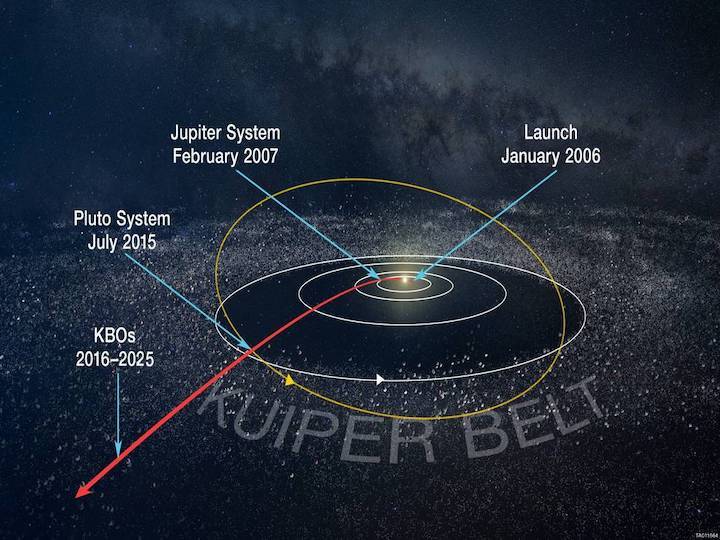
New Horizons Path of Exploration
Quelle: NASA
----
Update: 6.01.2020
.
Looking back at a New Horizons New Year's to remember
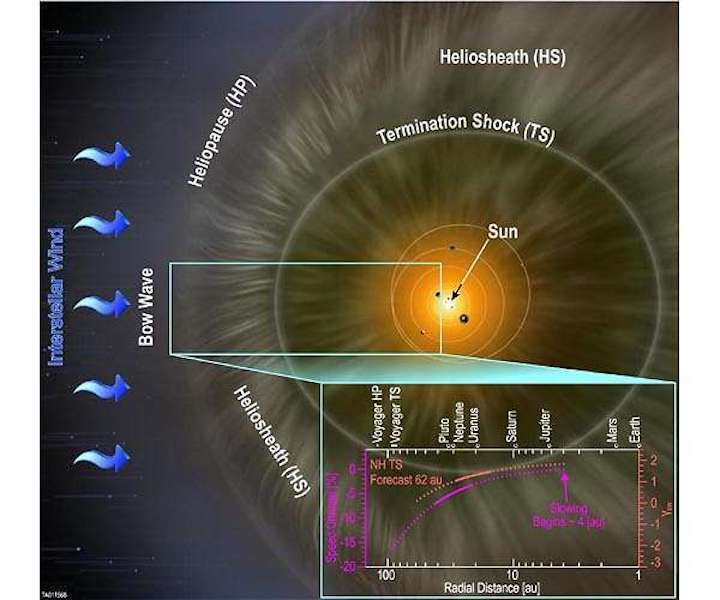
It was a busy year for New Horizons among the outerplanet.
Safe to say, 2020 came in more quietly for many members of the New Horizons mission team than did 2019.
A year ago, NASA's New Horizons spacecraft flew past the Kuiper Belt object 2014 MU69 (now known as Arrokoth) in the early hours of New Year's Day, ushering in an era of exploration of the enigmatic Kuiper Belt, a region of primordial objects that holds keys to understanding the origins of the solar system.
That flyby was both the first ever close-up exploration of a Kuiper Belt object and the most distant exploration of any object in space - more than a billion miles beyond Pluto, which New Horizons explored in 2015.
At the Johns Hopkins Applied Physics Laboratory in Laurel, Maryland, during what the Washington Post called the "nerdiest New Year's party in the solar system," participating scientist, astrophysicist and legendary Queen guitarist Brian May rang in 2019 with a song inspired by New Horizons. Mission Principal Investigator Alan Stern led a crowd of team members, family and friends in the countdown to the 12:33 a.m. flyby of the object, then known by its nickname, Ultima Thule.
Signals confirming the spacecraft was healthy and had filled its digital recorders with science data on MU69 reached the mission operations center at APL at 10:29 a.m. EST.
"Congratulations to NASA's New Horizons team, Johns Hopkins Applied Physics Laboratory and the Southwest Research Institute for making history yet again. In addition to being the first to explore Pluto, today New Horizons flew by the most distant object ever visited by a spacecraft and became the first to directly explore an object that holds remnants from the birth of our solar system," NASA Administrator Jim Bridenstine said at the time. "This is what leadership in space exploration is all about."
In the following months, New Horizons transmitted dozens of data sets to Earth, with the team writing new chapters in the story of Arrokoth and the outer solar system. And there's more to come in 2020.
"The flyby of Arrokoth was a landmark event in space exploration and for the first time revealed just how the building blocks of planets are made," said Stern, of the Southwest Research Institute. "Data from that flyby have been coming back to Earth all of 2019 and will continue to do so across all of 2020 and part of 2021. The discoveries those data hold have certainly just begun!"
Quelle: SD
----
Update: 15.02.2020
.
NASA's space snowman reveals secrets: few craters, no water
NASA's space snowman is revealing fresh secrets from its home far beyond Pluto
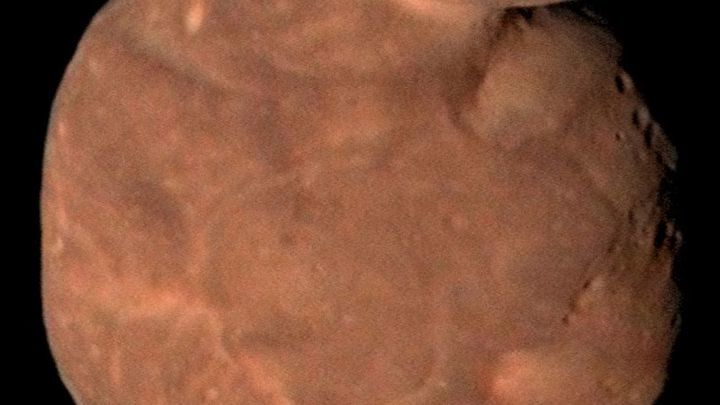
CAPE CANAVERAL, Fla. -- NASA's space snowman is revealing fresh secrets from its home far beyond Pluto.
More than a year after its close encounter with the snowman-shaped object, the New Horizons spacecraft is still sending back data from more than 4 billion miles (6.4 billion kilometers) away.
"The data rate is painfully slow from so far away," said Will Grundy of Lowell Observatory in Flagstaff, Arizona, one of the lead authors.
Astronomers reported Thursday that this pristine, primordial cosmic body now called Arrokoth — the most distant object ever explored — is relatively smooth with far fewer craters than expected. It's also entirely ultrared, or highly reflective, which is commonplace in the faraway Twilight Zone of our solar system known as the the Kuiper Belt.
Grundy said in an email that to the human eye, Arrokoth would look less red and more dark brown, sort of like molasses. The reddish color is indicative of organic molecules.
While frozen methane is present, no water has yet been found on the body, which is an estimated 22 miles (36 kilometers) long tip to tip. At a news conference Thursday in Seattle, New Horizons' chief scientist Alan Stern of Southwest Research Institute said its size was roughly that of the city.
As for the snowman shape, it's not nearly as flat on the backside as previously thought. Neither the small nor big sphere is fully round, but far from the flatter pancake shape scientists reported a year ago. The research team likened the somewhat flattened spherical forms to the shape of M&Ms.
No rings or satellites have been found. The light cratering suggests Arrokoth dates back to the formation of the solar system 4.5 billion years ago. It likely was created by a slow, gentle merger between two separate objects that possibly were an orbiting pair. The resulting fused body is considered a contact binary.
This kind of slow-motion hookup likely arose from collapsing clouds in the solar nebula, as opposed to intense collisions theorized to form these planetesimals, or little orbiting bodies.
New Horizons flew past Arrokoth on Jan. 1, 2019, more than three years after the spacecraft visited Pluto. Originally nicknamed Ultima Thule, the object received its official name in November; Arrokoth means sky in the language of the Native American Powhatan people.
Launched in 2006, the spacecraft is now 316 million miles (509 million kilometers) beyond Arrokoth. The research team is looking for other potential targets to investigate. Powerful ground telescopes still under construction will help survey this part of the sky.
Emerging technology will enable scientists to develop a mission that could put a spacecraft in orbit around Pluto, 3 billion miles (5 billion kilometers) away, according to Stern. After a few years, that same spacecraft could be sent even deeper into the Kuiper Belt to check out other dwarf planets and objects, he said.
The New Horizons scientists reported their latest findings at the annual meeting of the American Association for the Advancement of Science, as well as in three separate papers in the journal Science.
David Jewitt of the University of California, Los Angeles, who was not involved in the studies, said a flyby mission like New Horizons, where encounters last just a few days, is hardly ideal.
“For future missions, we need to be able to send spacecraft to the Kuiper Belt and keep them there” in orbit around objects, Jewitt wrote in a companion piece in Science. That would allow “these intriguing bodies to be studied in stunning geological and geophysical detail," he noted.
Quelle: abcNews
+++
New Horizons spacecraft 'alters theory of planet formation'
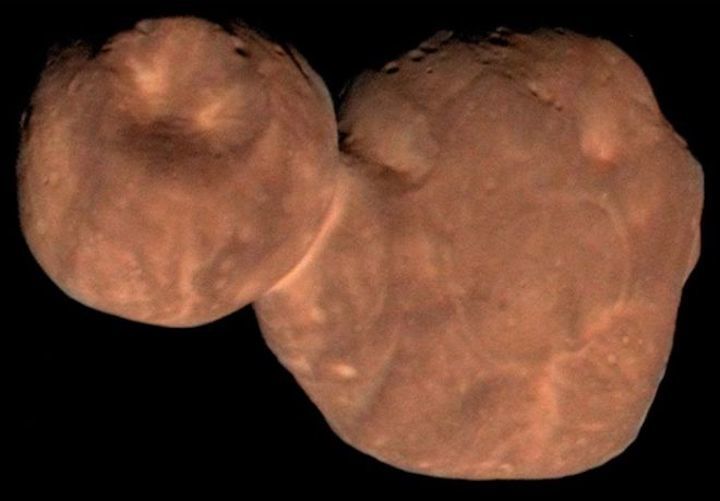
Scientists say they have "decisively" overturned the prevailing theory for how planets in our Solar System formed.
The established view is that material violently crashed together to form ever larger clumps until they became worlds.
New results suggest the process was less catastrophic - with matter gently clumping together instead.
The study appears in Science journal and has been presented at the American Association for the Advancement of Science meeting in Seattle.
The study's lead researcher, Dr Alan Stern, said that the discovery was of "stupendous magnitude".
"There was the prevailing theory from the late 1960s of violent collisions and a more recent emerging theory of gentle accumulation. One is dust and the other is the only one standing. This rarely happens in planetary science, but today we have settled the matter," he told BBC News.
The claim arises from detailed study of an object in the outer reaches of the Solar System. Named Arrokoth, the object is more than six billion km from the Sun in a region called the Kuiper belt. It is a pristine remnant of planet formation in action as the Solar System emerged 4.6 billion years ago, with two bodies combining to form a larger one.
Scientists obtained high-resolution pictures of Arrokoth when Nasa's New Horizons spacecraft flew close to it just over a year ago. It gave scientists their first opportunity to test which of the two competing theories was correct: did the two components crash together or was there gentle contact?
The analysis by Dr Stern and his team could find no evidence of violent impact. The researchers found no stress fractures, nor was there any flattening, indicating that the objects were squashed together gently.
"This is completely decisive," said Dr Stern. "In one fell swoop, the flyby of Arrokoth was able to decide between the two theories."
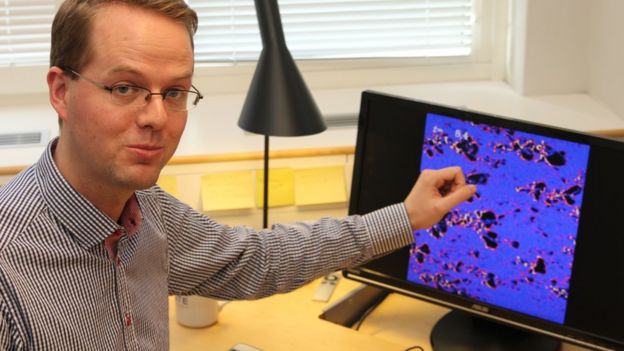 Image copyrightLUND OBSERVATORY
Image copyrightLUND OBSERVATORY
He is bullish because these so-called Kuiper belt objects have largely remained the same since the formation of the Solar System. They are, in effect, perfectly preserved fossils from this distant time.
The newer gentle clumping theory was developed 15 years ago by Prof Anders Johansen at Lund Observatory in Sweden. At the time he was a young PhD student. The idea emerged from computer simulations.
After speaking to Dr Stern, I broke the news to Prof Johansen that his theory had been confirmed. There was a pause on the line before he replied that he "felt great".
He added: "It is a special moment. I remember when I was a PhD student and feeling very nervous about these new results because they were very different to the ones before. I was worried that there was an error in my code or that I had made a calculation error.
"And then when you see these results confirmed from actual observations it is a real relief."
Prof Johansen commemorated the occasion with a pizza and coke with his family.
Engineer Dr Maggie Aderin-Pocock, who co-presents the BBC's Sky at Night programme, cautioned against toppling a theory based on the observation of one object, but said that Dr Stern's interpretation "makes a lot of sense".
"It is nice to have this evidence because the crashing together theory was a nice theory, but there were some challenges to it. Why did the objects stick together and not bounce apart. There was a lot that didn't add up."
When Arrokoth was discovered six years ago, it was known only by its designation 2014 MU69. At the time of the New Horizons flyby, it had been given the informal name Ultima Thule. While that name came from a classical and medieval term for a far-off place at the borders of the known world, its use by Nazi occultists as the mythical homeland of the Aryan race caused controversy.
The official name Arrokoth is a Native American term meaning "sky" in the Powhatan/Algonquian language.
Quelle: BBC
+++
Discoveries at solar system’s distant frontier shed light on how planets form
Data from the encounter of NASA’s New Horizons spacecraft with a frozen reddish snowman-shaped object a billion miles beyond Pluto last year suggest the building blocks of planets may have formed less violently than many scientists expected, officials said Thursday.
When new New Horizons zipped past the distant world Jan. 1, 2019, the probe captured imagery that showed it was formed of two smooth connected lobes, both reddish in color with little sign of structural damage, cracks or other evidence of a violent collision.
The appearance led scientists to hypothesize that the two lobes likely formed near one another soon after the birth of the solar system 4.5 billion years ago, then merged together at a relatively slow relative velocity. Modeling of data gathered by New Horizons during last year’s New Year’s Day flyby has confirmed the low-speed merger hypothesis.
Named Arrokoth, the dual-lobe world measures about 22 miles (36 kilometers) long, 12 miles (20 kilometers) wide, and around 6 miles (10 kilometers) thick. Scientists have compared its shape to a partially flattened snowman.
Arrokoth orbits the sun once every 293 years, and is located some 4.1 billion miles (6.6 billion kilometers) from Earth in the Kuiper Belt, a ring of small, icy worlds beyond the orbit of Neptune.
The New Horizons published three papers in the journal Science this week discussing the latest findings.
“Arrokoth is the most distant, most primitive and most pristine object ever explored by spacecraft, so we knew it would have a unique story to tell,” said Alan Stern, principal investigator on the New Horizons mission from the Southwest Research Institute in Boulder, Colorado. “It’s teaching us how planetesimals formed, and we believe the result marks a significant advance in understanding overall planetesimal and planet formation.”
Scientists formally named the object Arrokoth in November after initially giving it the nickname Ultima Thule, a term in medieval mythology that meant “beyond the borders of the known world.” Although the name “Ultima Thule” is centuries old, Nazis used the term to refer to the mythological birthplace of the Aryan race, prompting protests from numerous members of the scientific community and beyond.
Arrokoth means “sky” in the Powhatan/Algonquian language. With consent from Powhatan Tribal elders and representatives, NASA’s New Horizons team proposed the new name to the International Astronomical Union, which oversees the formal naming of planetary objects and astronomical features.
Planetesimals are the building blocks of planets, many of which accreted into ever-larger clumps to create worlds like Earth. But some of the would-be planets stopped growing as other planet-forming materials coalesced elsewhere, leaving behind time capsules like Arrokoth ripe for research using modern spacecraft, instrumentation and computer modeling.
The results show the two pieces that formed Arrokoth formed close together, orbited one another, and then finally merged at a speed equivalent to a brisk walking pace.
That evidence suggests Arrokoth was created in a much less violent way than some scientists theorized.
“Just as fossils tell us how species evolved on Earth, planetesimals tell us how planets formed in space,” said William McKinnon, a New Horizons co-investigator from Washington University in St. Louis, and lead author of an Arrokoth formation paper in Science this week. “Arrokoth looks the way it does not because it formed through violent collisions, but in more of an intricate dance, in which its component objects slowly orbited each other before coming together.”
Scientists have come up with two major competing theories explaining planetesimal formation. One is called the cloud collapse model, and other is known as hierarchical accretion.
Data from the New Horizons mission supports the cloud collapse theory, indicating Arrokoth formed as solid particles in the primordial solar nebula gently collapsed onto one another under the tug of gravity. The competing theory of hierarchical accretion supposes that planetesimals collided with each other at high speed like billiard balls to accrete into larger bodies.
Visual evidence from the New Horizons flyby last year supports modeling suggesting the two lobes came together at slow speeds.
There is no sign of visible damage at the surface of Arrokoth, and both lobes appear the same color with the same mineral composition, suggesting they formed from the same type of material in the same region of the ancient solar system.
“Arrokoth has the physical features of a body that came together slowly, with ‘local’ materials in the solar nebula,” said Will Grundy, New Horizons composition theme team lead from Lowell Observatory in Flagstaff, Arizona, and the lead author of another Science paper. “An object like Arrokoth wouldn’t have formed, or look the way it does, in a more chaotic accretion environment.”
Scientists said the flattened shape of Arrokoth and close alignment of the equators and poles on each lobe also supports the conclusion that the two segments did not collide chaotically.
“All of the evidence we’ve found points to particle-cloud collapse models, and all but rule out hierarchical accretion for the formation mode of Arrokoth, and by inference, other planetesimals,” Stern said in a statement.
The new papers published in Science are follow-ups to a paper from May 2019 that laid out the New Horizons team’s initial conclusions from the Arrokoth flyby. The information released Thursday is based on 10 times as much data as the May 2019 report.
New Horizons flew by Arrokoth at a relative velocity of roughly 32,000 mph, or 9 miles per second (14 kilometers per second), obtaining a snapshot view the faraway world.
The fresh data downlinked New Horizons since last May also produced refined estimates of Arrokoth’s dimensions.
Scientists estimate Arrokoth’s larger lobe is about 12.8 miles (20.6 kilometers) by 12.4 miles (19.9 kilometers) by 5.8 miles (9.4 kilometers). The smaller lobe is roughly 9.6 miles (15.4 kilometers) by 8.6 miles (13.8 kilometers) by 6.1 miles (9.8 kilometers).
The updated dimensions give Arrokoth a volume about 30 percent larger than the previous estimate, the New Horizons team wrote in one of the Science papers this week.
Launched in 2006, the New Horizons spacecraft obtained the first up-close glimpse of Pluto and its moons in July 2015. Ground controllers steered the probe toward a second, more distant flyby target with leftover fuel after scientists discovered Arrokoth with the Hubble Space Telescope.
New Horizons is now in an extended mission, using its instruments to make long-range observations of other Kuiper Belt Objects and collect data on the radiation and dust environment more than 4 billion miles from the sun.
Scientists plan to use ground-based telescopes later this year to search for another target in the Kuiper Belt that New Horizons could reach for a close-up flyby in the coming years.
Quelle: SN
----
Update: 13.06.2020
.
NASA's New Horizons Conducts the First Interstellar Parallax Experiment
For the first time, a spacecraft has sent back pictures of the sky from so far away that some stars appear to be in different positions than we see from Earth.
More than four billion miles from home and speeding toward interstellar space, NASA's New Horizons has traveled so far that it now has a unique view of the nearest stars. "It's fair to say that New Horizons is looking at an alien sky, unlike what we see from Earth," said Alan Stern, New Horizons principal investigator from Southwest Research Institute (SwRI) in Boulder, Colorado. "And that has allowed us to do something that had never been accomplished before — to see the nearest stars visibly displaced on the sky from the positions we see them on Earth."
On April 22-23, the spacecraft turned its long-range telescopic camera to a pair of the closest stars, Proxima Centauri and Wolf 359, showing just how they appear in different places than we see from Earth. Scientists have long used this "parallax effect" – how a star appears to shift against its background when seen from different locations -- to measure distances to stars.
An easy way to see parallax is to place one finger at arm's length and watch it jump back and forth when you view it successively with each eye. Similarly, as Earth makes it way around the Sun, the stars shift their positions. But because even the nearest stars are hundreds of thousands of times farther away than the diameter of Earth's orbit, the parallax shifts are tiny, and can only be measured with precise instrumentation.
"No human eye can detect these shifts," Stern said.
But when New Horizons images are paired with pictures of the same stars taken on the same dates by telescopes on Earth, the parallax shift is instantly visible. The combination yields a 3D view of the stars "floating" in front of their background star fields.
"The New Horizons experiment provides the largest parallax baseline ever made -- over 4 billion miles -- and is the first demonstration of an easily observable stellar parallax," said Tod Lauer, New Horizons science team member from the National Science Foundation's National Optical-Infrared Astronomy Research Laboratory who coordinated the parallax demonstration.
New Horizons contributing scientist, astrophysicist and legendary Queen guitarist Brian May uses an OWL viewer to check out the stereo images of Proxima Centauri he created by combining pictures from Earth-based telescopes and the New Horizons spacecraft. (Photos courtesy of Brian May)
Working in Stereo
Lauer, New Horizons Deputy Project Scientist John Spencer, of SwRI, and science team collaborator, astrophysicist, Queen guitarist and stereo imaging enthusiast Brian May created the images that clearly show the effect of the vast distance between Earth and the two nearby stars.
"It could be argued that in astro-stereoscopy -- 3D images of astronomical objects – NASA's New Horizons team already leads the field, having delivered astounding stereoscopic images of both Pluto and the remote Kuiper Belt object Arrokoth," May said. "But the latest New Horizons stereoscopic experiment breaks all records. These photographs of Proxima Centauri and Wolf 359 – stars that are well-known to amateur astronomers and science fiction aficionados alike -- employ the largest distance between viewpoints ever achieved in 180 years of stereoscopy!"
The companion Earth-based images of Proxima Centauri and Wolf 359 were provided by the Las Cumbres Observatory, operating a remote telescope at Siding Spring Observatory in Australia, and astronomers John Kielkopf, University of Louisville, and Karen Collins, Harvard and Smithsonian Center for Astrophysics, operating a remote telescope at Mt. Lemmon Observatory in Arizona.
"The professional and amateur astronomy communities had been waiting to try this, and were very excited to make a little space exploration history," said Lauer. "The images collected on Earth when New Horizons was observing Proxima Centauri and Wolf 359 really exceeded my expectations."
Download Images and Create!
Download the images and learn more about creating and posting your own parallax perspectives. #NHparallax
An Interstellar Navigation First
Throughout history, navigators have used measurements of the stars to establish their position on Earth. Interstellar navigators can do the same to establish their position in the galaxy, using a technique that New Horizons has demonstrated for the first time. While radio tracking by NASA's Deep Space Network is far more accurate, its first use is a significant milestone in what may someday become human exploration of the galaxy.
At the time of the observations, New Horizons was more than 4.3 billion miles (about 7 billion kilometers) from Earth, where a radio signal, traveling at the speed of light, needed just under 6 hours and 30 minutes to reach home.
Launched in 2006, New Horizons is the first mission to Pluto and the Kuiper Belt. It explored Pluto and its moons in July 2015 -- completing the space-age reconnaissance of the planets that started 50 years earlier -- and continued on its unparalleled voyage of exploration with the close flyby of Kuiper Belt object Arrokoth in January 2019. New Horizons will eventually leave the solar system, joining the Voyagers and Pioneers on their paths to the stars.
Parallel Stereo
Use a stereo viewer for these images; if you don't have a viewer, change your focus from the image by looking "through" it (and the screen) and into the distance. This creates the effect of a third image in the middle, and try setting your focus on that third image. The New Horizons image is on the left.
Cross-Eyed Stereo
For this view, cross your eyes until the pair of images merges into one. It might help to place your finger or a pen just a couple of inches from your eyes, and focus on it. When the background image comes into focus, remove the closer object and concentrate on the image.
The Johns Hopkins University Applied Physics Laboratory in Laurel, Maryland, designed, built and operates the New Horizons spacecraft, and manages the mission for NASA's Science Mission Directorate. The MSFC Planetary Management Office provides the NASA oversight for the New Horizons. Southwest Research Institute, based in San Antonio, directs the mission via Principal Investigator Stern, and leads the science team, payload operations and encounter science planning. New Horizons is part of the New Frontiers Program managed by NASA's Marshall Space Flight Center in Huntsville, Alabama.
Quelle: The Johns Hopkins University
----
Update: 26.10.2021
.
Keeping our eyes on New Horizons
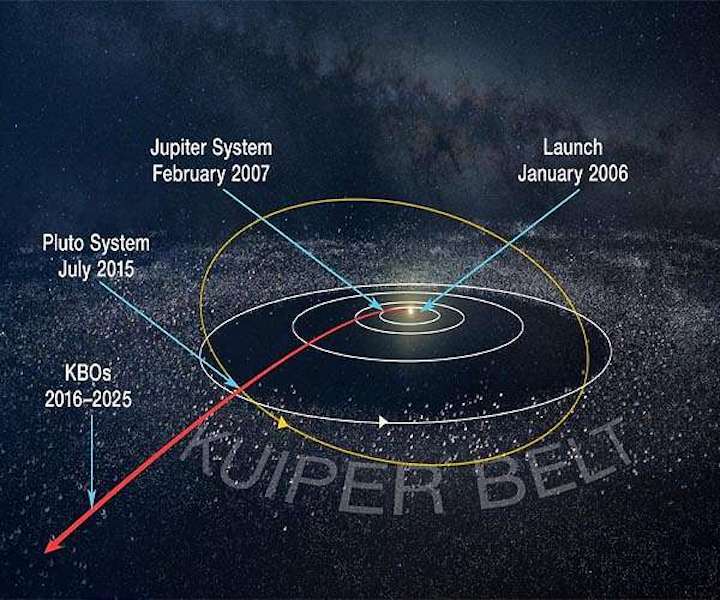
"We are now working hard to propose on NASA's Jan. 18 deadline to continue New Horizons for another three years. Because we hope that we can find another KBO to fly by, we have begun conserving fuel even more stringently than before, maximizing the chance of reaching another KBO, which would require a course-correcting targeting maneuver using that fuel."
New Horizons remains healthy and continues to send valuable data from the Kuiper Belt, even as it speeds farther and farther from Earth and the Sun. Our team has been extremely busy since I last wrote in the spring. One of the most important activities since then has been ground testing, uploading and flight-testing new software for our Alice ultraviolet spectrometer and our main (Command and Data Handling) computer.
The two new software packages were transmitted to New Horizons by radio link in late July and August. Then in September and very early October, we took these upgrades for a comprehensive test spin. Not all this test data is back on Earth yet, but everything we've seen from those tests so far indicates the new capabilities perform as planned and can now be used to enhance our science return as we continue outward, exploring the Kuiper Belt.
Those new capabilities include a high time resolution mode for the SWAP solar wind plasma spectrometer, image-combining capabilities for our Long Range Reconnaissance Imager (LORRI) and Multispectral Visible Imaging Camera (MVIC) when they are looking at faint sources, and dust detection and thermal mapping capabilities for the REX radio science experiment. We also added a new sky-mapping capability to the Alice ultraviolet spectrometer. We're excited to start using these new capabilities! We're also excited that new burst-detection flight software for our PEPSSI plasma spectrometer is now being written and tested, and will be uploaded next year.
In addition to the new software work, New Horizons also conducted new Kuiper Belt Object (KBO) observations in September, and made our first hydrogen maps of the sky as seen from the Kuiper Belt using the Alice ultraviolet spectrometer. And on top of that our groundbased KBO search team has been proposing, winning and executing observing runs to find KBOs for New Horizons to study in the distance, or even fly by. Amazingly, they are finding objects we will past closest to many years from now, much farther out than previously predicted!
In other mission news, our nearly 1,000-page compendium volume called "The Pluto System After New Horizons," which updates everything known about Pluto and its system of moons, was published in July. And guess what happened? It sold out within less than two weeks! We are told by the Space Science Series that that has never happened before. Fortunately, after a new printing, the book is again available through commercial booksellers and the University of Arizona Press, home of the Space Science Series.
Our team has also been busy writing up many new scientific results. These range from the discovery of the two tightest known KBO binaries to the discovery that KBO surface properties are correlated with their composition. Other new papers detail the properties and origin of the many thousands of sublimation pits in Pluto's Sputnik Planitia glacier, new measurements of dust in the Kuiper Belt, and a far ranging look at the geophysical properties of our most recent flyby target, the KBO Arrokoth!
We are now working hard to propose on NASA's Jan. 18 deadline to continue New Horizons for another three years. Because we hope that we can find another KBO to fly by, we have begun conserving fuel even more stringently than before, maximizing the chance of reaching another KBO, which would require a course-correcting targeting maneuver using that fuel.
While we do that, we still plan to collect data on the Sun's outer heliosphere, which is the dust and gas and plasma environment of the Kuiper Belt. NASA will review and then let us know the fate of that proposal in early spring. There are a whole lot of crossed fingers on our team!
Well, that's my report for now. I'll write again soon to review the past year and look ahead to our plans for 2022. In the meantime, I hope you'll keep on exploring - just as we do!
Quelle: SD


